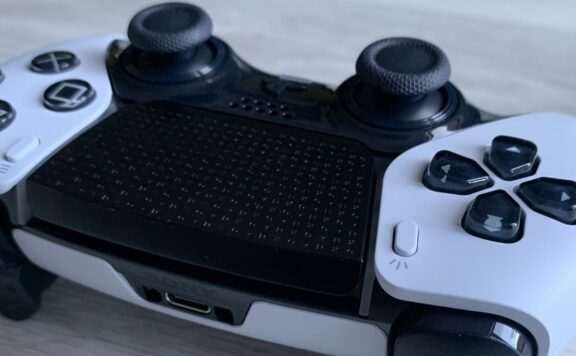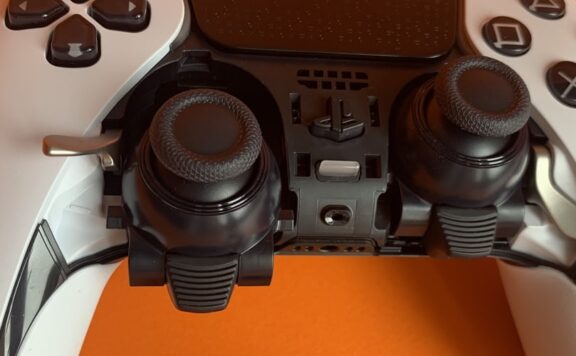Chinese video game peripheral maker GuliKit has stated that they intend to make DualSense Edge Hall Effect analogue stick modules that feature stick drift resistant magnet sensing technology.
Having recently announced and released Hall Effect analogue sticks for Nintendo Switch Joy-Con, as well as replacement Hall Effect sticks for Valve’s Steam Deck, GuliKit was asked on Twitter if they would also create modules for the DualSense controller, the company replied that they would first aim to do so for the DualSense Edge, which features easily replaceable analogue stick modules.
Will do first for Dual Sense Edge because that is easier for its modular design. https://t.co/OTYoD25yAI
— GuliKit (@GuliKitDesign) January 23, 2023
There’s no indication of when GuliKit might be able to make these stick modules available, as they will first need to reverse engineer the design of the original DualSense Edge stick modules and Fn button. Thankfully, once they’ve done that, gamers will be able to swap them out very, very easily – here’s how to swap the DualSense Edge analogue sticks. The question will be how much they cost, as Sony’s own replacements are $20 / £20 each, and GuliKit’s Joy-Con alternatives are £30 per pair. There’s also the question of whether or not they can produce them without falling foul of some design patent or other that Sony has produced – they’ve notably gone after PS5 cover replacements, and those are just wavy bits of plastic!
This is low-hanging fruit for GuliKit. The Joy-Con and Steam Deck stick modules require more in-depth dismantling of the controller and console to replace them, and when it comes to regular DualSense and Xbox Series controllers, Sony and Microsoft have soldered the analogue sticks to the circuit boards.
What are Hall Effect sensors, and why are they better?
Named after 19th century scientist who discovered it, Edwin Hall, the Hall Effect sensors can detect the presence and magnitude of a magnetic field to then output voltage proportional to the strength of that magnetic field. Using two of these sensors within an analogue stick module allows for the detection of how the stick has been manipulated across two axis.
Importantly, compared to potentiometer-based analogue sticks that are found across all first party game controllers, Hall effect sensors do not require direct contact to track motion. This makes them much more resistant to dust and dirt getting inside the module, and means that there is no wear on contacts, both of which have led to what has been dubbed ‘stick drift’.
This has plagued the much thinner analogue stick modules used within the Nintendo Switch Joy-Con, but can also affect the larger and more robust modules found in Xbox One and Xbox Series, DualShock and DualSense controllers.

You can swap out analogue stick modules on the Edge very easily.
Why aren’t these in DualSense and Xbox Series controllers already?
So why isn’t everyone using them? One factor will be cost. Potentiometer analogue sticks are simple off-the-shelf parts, while Hall Effect modules could be a little more expensive. When producing millions of devices, every dollar and cent matters (especially as Sony has been stuffing their controllers with more advanced haptics and adaptive trigger tech!), so companies will try to bring costs down as much as possible.
There’s also the question of patents. GuliKit is producing drop-in replacements that are based on a patented method of translating Hall Effect inputs to match those of regular potentiometer modules. Without this, the controllers and consoles wouldn’t have a foggy clue what they’re being told. Hall Effect sticks have been employed in previous gamepads – notably Sega’s Saturn and Dreamcast controllers – and are found in Thrustmaster’s racing wheels and pedals, but they were designed around these inputs from the off.
The sensor also isn’t the only factor in an analogue stick’s durability, with analogue stick click buttons leading to a loosening of the plastic construction over time, which can introduce stick drift in a different way.
Is the DualSense Edge worth it?
At £210, the DualSense Edge is a very expensive controller, but it comes with a lot of great features for gamers that want to get… an edge in gaming. There’s trigger stops, there’s a pair of back buttons, customisable analogue stick acceleration curves and replaceable stick modules, and plenty more.
That said, I criticised the lack of Hall Effect sensors and short battery life in our DualSense Edge review, but concluded that “The DualSense Edge is an excellent first pro controller from Sony, the direct ties to the PS5 software and the familiar DualSense form making it a prime option for PlayStation gamers. It’s a shame that it and the emerging third party alternatives are just so damn expensive.”




